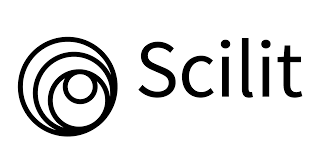Pengaruh Komposisi Limbah Kulit Kopi Arabika Gayo Dan Serbuk Kayu Terhadap Sifat Fisik Dan Mekanik Papan Komposit
DOI:
https://doi.org/10.55616/prince.v1i2.310Keywords:
Composite board, Coffee skin, Sawdust, Physical properties, Mechanical propertiesAbstract
Composite board is a raw material physically and chemically. The main elements on the composite board in this study are sawdust, horn skins of Gayo Arabica coffee, and adhesives. Comparison of sawdust and coffee mixture in percentage are, 70 : 30, 50 : 50, and 60 : 40. The purpose of this study is to determine the effect of the composition. This method of manufacturing composite boards refers to SNI 03-2105-2006. Therefore, the results obtained for each test that are high at a moisture content of 70:30 with a value of 9.786%, a density of 30 : 70 with a value of 0.59%, a thick development of 70 : 30 with a value of 9%, a biodegradable of 60:40 with a value of 24.20%, a MOE ratio of 30 : 70 with a value of 1378.76 kgf/cm2, MOR 60 : 40 with a value of 657.26 kgf/cm2, tensile Strength of 50 : 50 which is 307,647 kgf/cm2. It is found that the comparison of Gayo Arabica coffee skin and sawdust affects its physical and mechanical properties. The more sawdust on the mixture, the higher the value of its physical properties. The more coffee skins in the mixture, the higher the value of its mechanical properties.
References
N. Milawarni, “Potensi Kulit Tanduk Biji Kopi Sebagai Bahan Papan Partikel,” Teknologi, Vol. 15, Pp. 1–26, 2015.
J. F. Dumanauw, Mengenal Kayu, Pendidikan. Semarang: Pika, 2001.
V. Rhein And Dan A. D. A. , Yudhomenggolo Sastro Darmanto, “Pengaruh Dari Berbagai Jenis Kulit Ikan Terhadap Keteguhan Rekat, Kerusakan Permukaan Kayu, Dan Viskositas Pada Lem Ikan,” Vol. 6, 2017.
Badan Standardisasi Nasional, “Papan Partikel,” Standar Nas. Indones. (Papan Serat), Pp. 1–23, 2006.
W. Hidanto And M. Mora, “Analisis Pengaruh Komposisi Serbuk Terhadap Sifat Fisis Dan Mekanis Komposit Papan Partikel Dari Tandan Kosong Kelapa Sawit, Serbuk Kayu Dan Tempurung…,” J. Fis. Unand, 2019, [Online]. Available: http://jfu.fmipa.unand.ac.id/index.php/jfu/article/view/399.
H. Nurdin, P. Purwantono, and N. Rivai, Pengaruh Perekat Terhadap Kerapatan Papan Komposit Berbahan Baku Ampas Tebu. repository.unp.ac.id, 2014.
A. Zulmiardi, Meritna, “Pengaruh fraksi volume terhadap kekuatan tarik komposit polyester BQTN type 157-Ex yang diperkuat serat abaka,” Semin. Nas. Tek. Ind., vol. 4, no. 1, 2019, [Online]. Available: https://repository.unimal.ac.id/4989/1/30-Paper-SNTI-2019.pdf.
Arwana, Ketut.I., Ni.G.A.d. Martiningsih. E., Budiasa, I. M., Sukarna. I. G. 2010. Pemanfaatan Limbah Kulit Buah Kopi Arabika Dalam Upaya Peningkatan Keutungan Ukm dan Pelestarian Lingkungan. Majalah Aplikasi Ipteks Ngayah, 1 (1), 2010, 89-96.
Widyotomo. S. 2013. Potensi Teknologi Diversifikasi Limbah Kopi Menjadi Produk Bermutu dan Bernilai Tambah. Pusat Penelitian Kopi dan Kakao Indonesia, vol. 1 (1): 63-80.
Sundari. E. Sari. E., dan Rinaldo. R. 2012. Pembuatan Pupuk Organik Cair Menggunakan Bioaktivator Biosca dan EM4. Prosiding SNTK KOPI 2012.
Luthfianto, S. (2012). Membangun Narasi Skenario Industrialisasi Sampah Organik Menjadi Biogas di Indonesia, Jurnal Engineering, 4(1), 65-74. Retrieved from http://e-journal.upstegal.ac.id/index.php/eng/article/viewFile/116/122
Yuliandari Mustika Treisna 2017. 3 Manfaat Dari Limbah Kopi.
Supeno. B., Laksmi E. N. M., dan Erwan, 2018. Limbah Tanaman Kopi dan Hasilnya Olahannya yang memiliki nilai ekonomis tinggi. Arga Puji Press. Mataram.102p.
Saisa, (2018). Produksi Bioetanol Dari Limbah Kulit Kopi Menggunakan Enzim Zymomonas Mobilis Dan Saccharomyces Cereviseae. Skripsi, Universitas Serambi Mekkah
Fitri, N. 2017. Pembuatan Briket dari Campuran Kulit Kopi (Coffea Arabica) dan Serbuk Gergaji dengan Menggunakan Getah Pinus (Pinus Merkusii) sebagai Perekat. No. 1 Vol. 65.
Rahardjo, P. 2012. Kopi : Panduan Budi Daya dan Pengolahan Kopi Arabika dan Robusta. Jakarta: Penebar Swadaya.
Published
How to Cite
Issue
Section
Copyright (c) 2022 PRINCE : Journal of Planning and Research in Civil Engineering

This work is licensed under a Creative Commons Attribution 4.0 International License.
Ciptaan disebarluaskan di bawah Lisensi Creative Commons Atribusi 4.0 Internasional.












